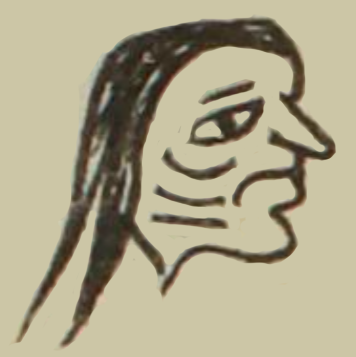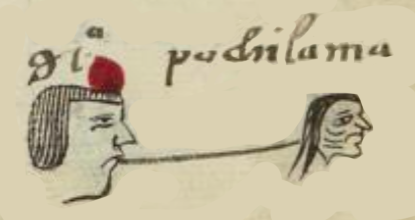Pochilama (MH837r)
This black-line drawing of the simplex glyph for the personal name Pochilama (perhaps “Gray-Haired Elder Woman” or “Spongy-Pale Elder Woman”) is attested here as a man’s name. The glyph shows the head of an aged woman in profile, facing the viewer’s right. She has long hair down the back of her neck, and she has curving, horizontal lines on her visible cheek.
Stephanie Wood
This is one of many names held by men that have a female-gendered component (such as elder woman, ilama, as seen here). One of the Advanced Search features under Cultural Content is the option to search “Names (men’s but with female dimension.” Western assumptions about older women should be tempered with their Nahua associations with such things as the divine force of the wind (Ehecatl or Ecatl) and with eagles (cuauhtli), which had, in turn, associations with warriors.
Stephanie Wood
dio. pochilama
Diego Pochilama
Stephanie Wood
1560
Jeff Haskett-Wood
viejas, canosas, nombres de hombres

cuapochtic, gray-haired, https://nahuatl.wired-humanities.org/content/cuapochictic
pochictic, spongy and pale, https://nahuatl.wired-humanities.org/content/pochictic
ilama, an elder woman, https://nahuatl.wired-humanities.org/content/ilama
Vieja Canosa
Stephanie Wood
Matrícula de Huexotzinco, folio 837r, World Digital Library, https://www.loc.gov/resource/gdcwdl.wdl_15282/?sp=748&st=image.
This manuscript is hosted by the Library of Congress and the World Digital Library; used here with the Creative Commons, “Attribution-NonCommercial-ShareAlike 3.0 License” (CC-BY-NC-SAq 3.0).





